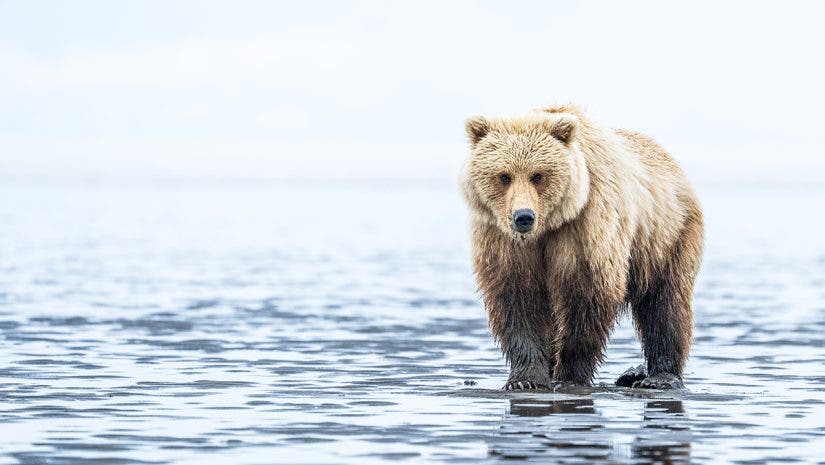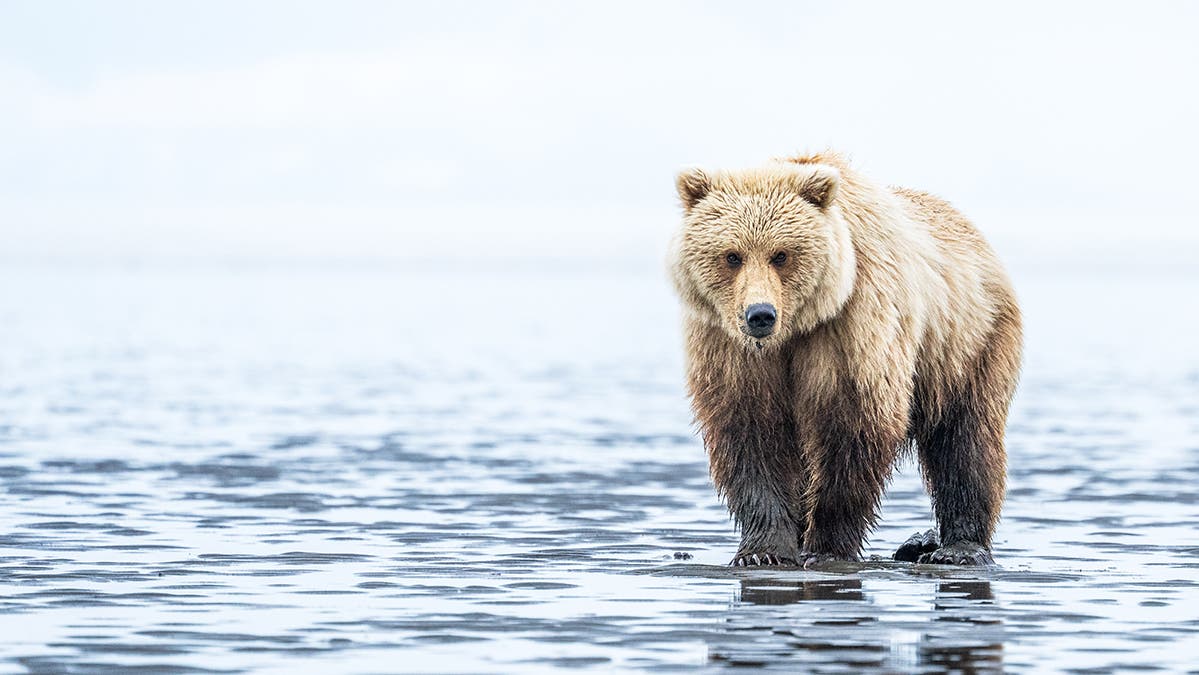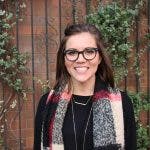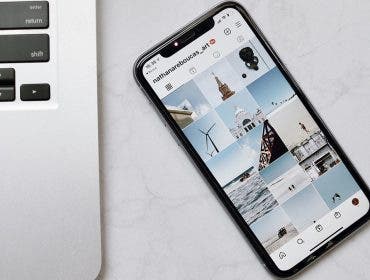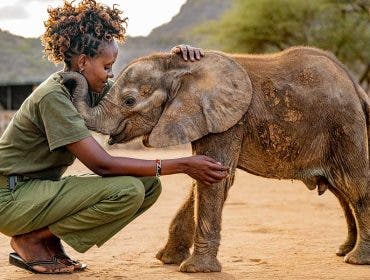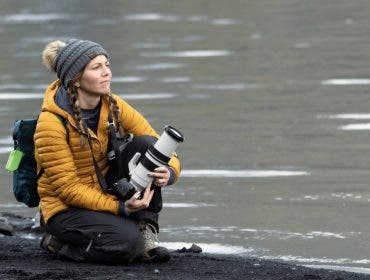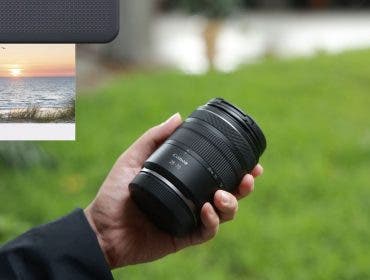When passion meets partnership, magic unfolds—and few couples illustrate this like bear photographers Jessica Morgan and Mike Hillman. The adventurous duo met as guides in the wilderness in 2019, then quickly bonded over their love for imagery.
Fast forward half a decade, and Morgan and Hillman, now married, are expedition leaders at sustainable tourism outfitter Natural Habitat Adventures’ Alaska Bear Camp, a remote safari getaway on a private Chinitna Bay-front homestead flanked by Lake Clark National Park. This mountain-view escape is an enviable outpost for any wildlife lover. For bear photographers, it’s the ultimate dream.
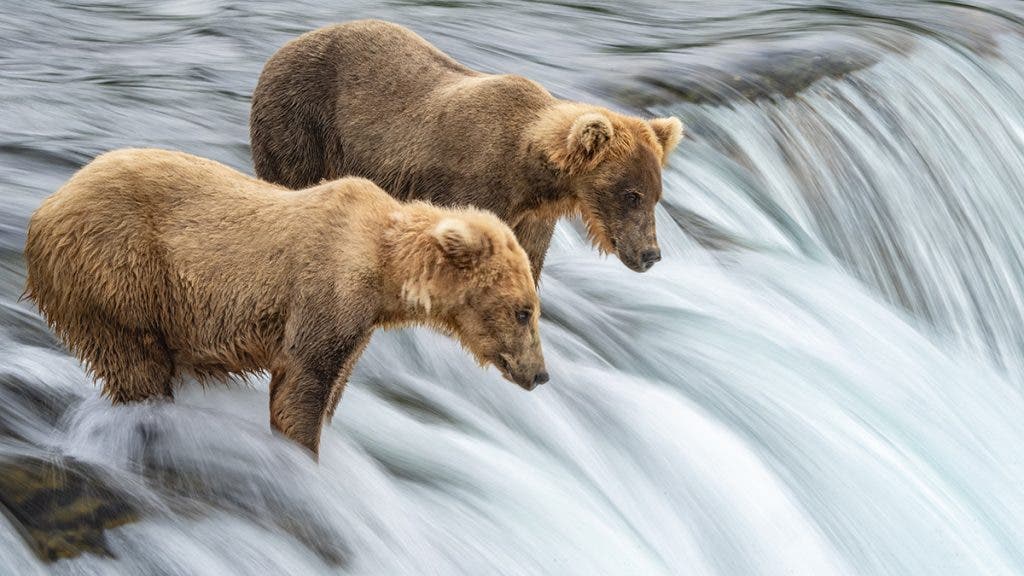
“South-central Alaska is the best place in North America to photograph brown bears,” says Hillman, noting the region, set at the base of the Alaskan Peninsula, brims with salmon-filled rivers and sedge meadows—two food sources that allure the enormous animals made famous by the beloved annual Fat Bear Week, which takes place just south of Bear Camp at Katmai National Park.
Hillman and Morgan spend their working hours leading guests to safely admire the bears, and their off days and hours out in the field photographing them. Using tourism and photography to protect the animals against growing threats, particularly mining, has become their shared mission.
For this article, we sat down with Morgan and Hillman to learn how they built a strong—and dare we say #couplegoals—partnership around wildlife photography, including how they fell in love with brown bears, how their guiding careers bolster their photography work, and how travelers (particularly photographers) can use their adventures to support the fuzzy giants, too.
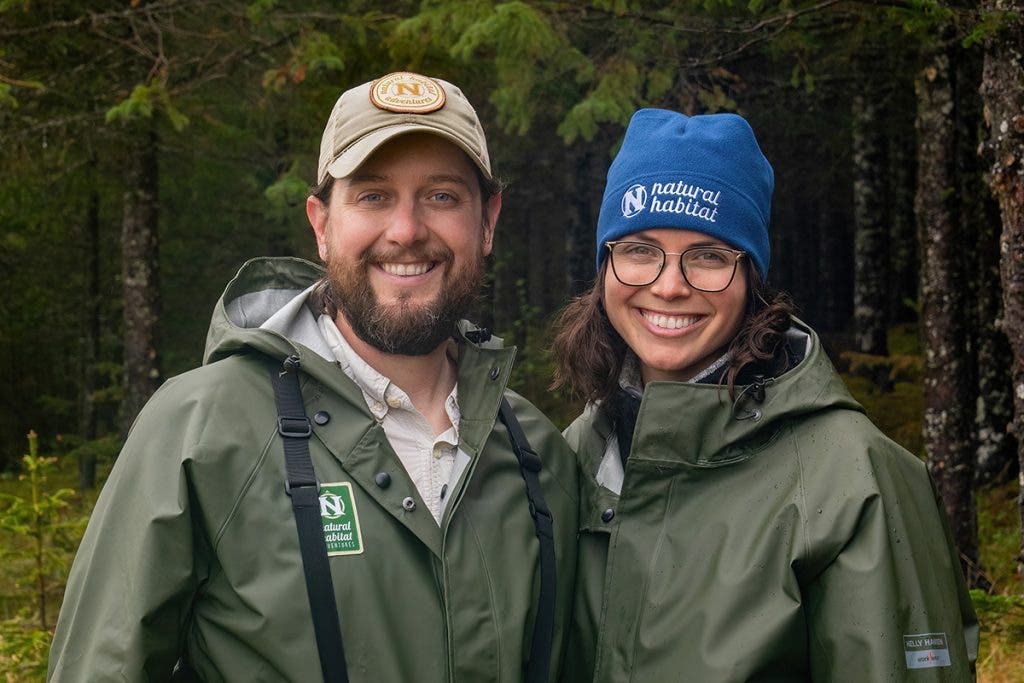
Falling head over hiking boots
In late 2019, Morgan and Hillman were independently pursuing their own adventure-guiding careers—her in the bear country of Yellowstone, him as a Natural Habitat Adventures (NatHab) guide leading trips to see everything from Churchill polar bears to Katmai brown bears. Fate brought these bear lovers together when Morgan was hired to drive Hillman’s group around Yellowstone in a snow-coach vehicle.
She secretly hoped the day would lead to her getting a job with well-respected NatHab, the World Wildlife Fund’s travel partner. Little did Morgan know that gig would lead to much, much more. “It was instant sparks,” she recalls of first meeting Hillman. He felt it, too, and accidentally (but not-so-accidentally) left his water bottle on the bus at the end of the day—a move that meant she had to find him to return it.
The pair started dating soon after that, then quarantined during the pandemic together in Morgan’s home base, Tucson, where their shared passion for photography provided a reprieve from lockdown and ultimately helped their relationship bloom. “We were both already very into photography, and I think it almost enhanced when we met each other,” Morgan says.
Many say the right life partner will help you become the best version of yourself; Hillman and Morgan learned their love could bolster their photography skills, too. “She has such a better photographic eye than I do; it’s awesome when you can go out [photographing] with someone you know so well and get to see what they come back with,” he says. “She has this artistic view of looking at landscapes and zooming in; it’s really pushed my photography. I would not even be close to the photographer I am today without her.”
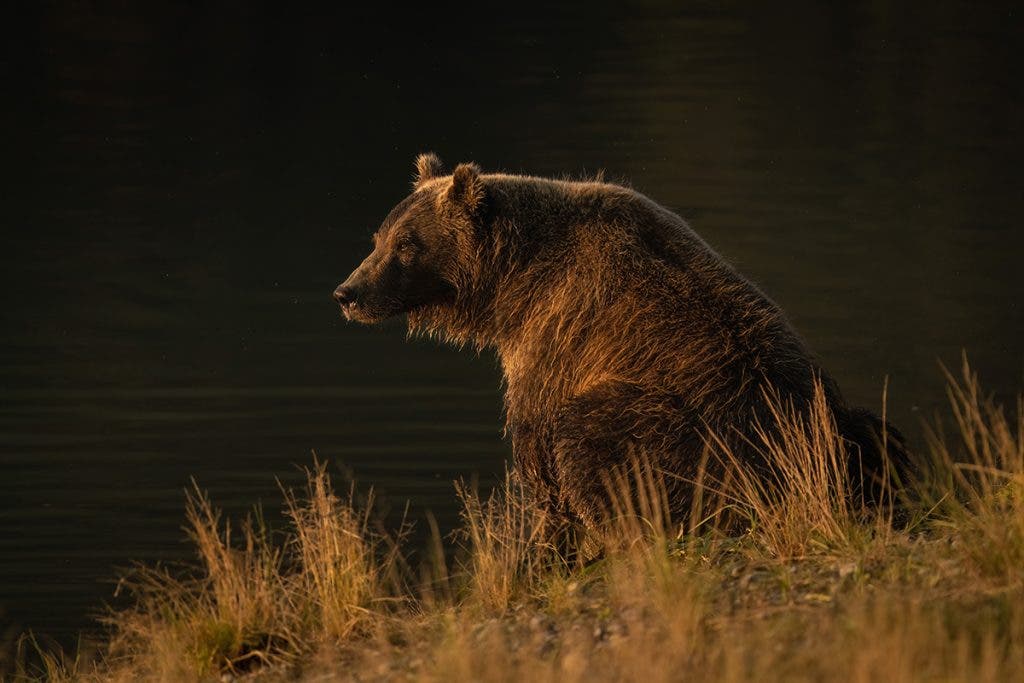
A move to bear country
While Morgan and Hillman had separate bear photography backgrounds, 2022 presented an opportunity for the pair to grow this passion together. That year, NatHab took over the operations of Alaska Bear Camp; they run it almost like an African safari getaway, where guests sleep in the wilderness in glamping tents (protected by an electric fence), then go out on foot or safari vehicles with expert guides to search for the fuzzy bruins. Sometimes, you can even spot the bears from camp.
To effectively operate this kind of experience, NatHab needed to find the right guides; Morgan and Hillman were obvious fits. The duo uprooted and temporarily moved to the far-flung fringes of Lake Clark National Park, reached via a tiny bush plane from Homer, where they’ve spent the past few summers.
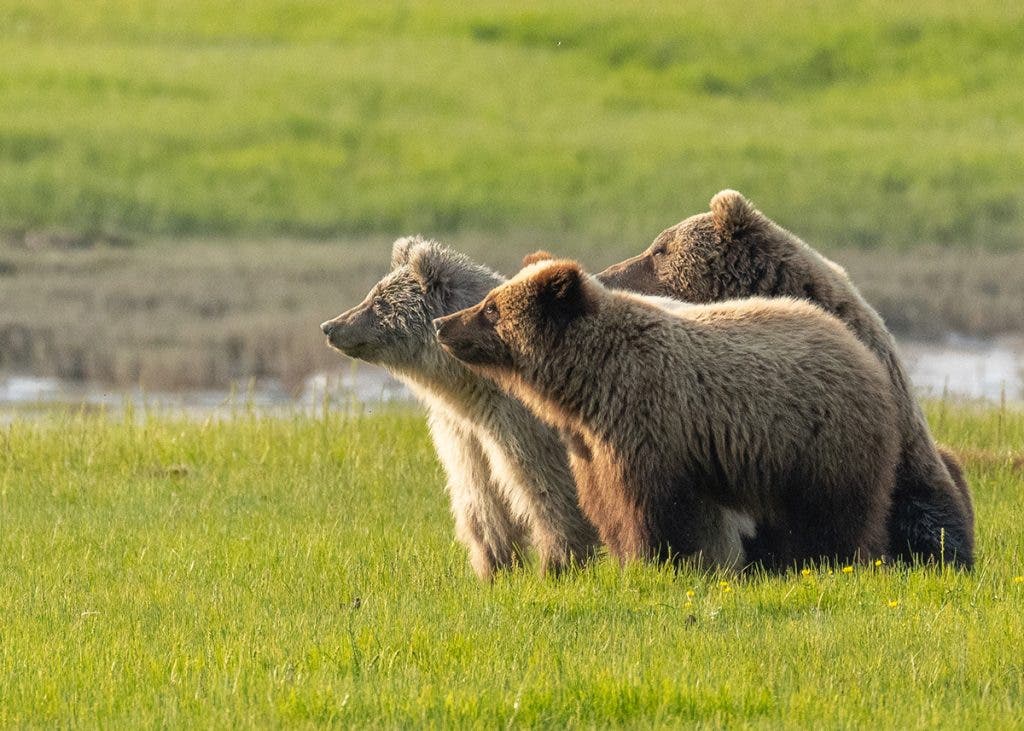
Guiding has helped Morgan and Hillman learn the behaviors of these bears intimately. The knowledge is essential for keeping guests safe out in the wild; it also complements their photography. “When it comes to photographing any animal, you have to be a bit of a biologist and understand their behavior—and you have to be not photographing, just observing, them for a while,” Morgan says. “After months and months of living in their habitat, you get to see their behavior, and it becomes way more predictable than you’d probably think.”
Hillman agrees: “Bears are fascinating in that, for the most part, they tell you what they’re going to do. You can make predictions based on the situation. If they’re trying to get away from another bear or go toward one, or if they’re looking for food or trying to retreat for rest in the woods.”
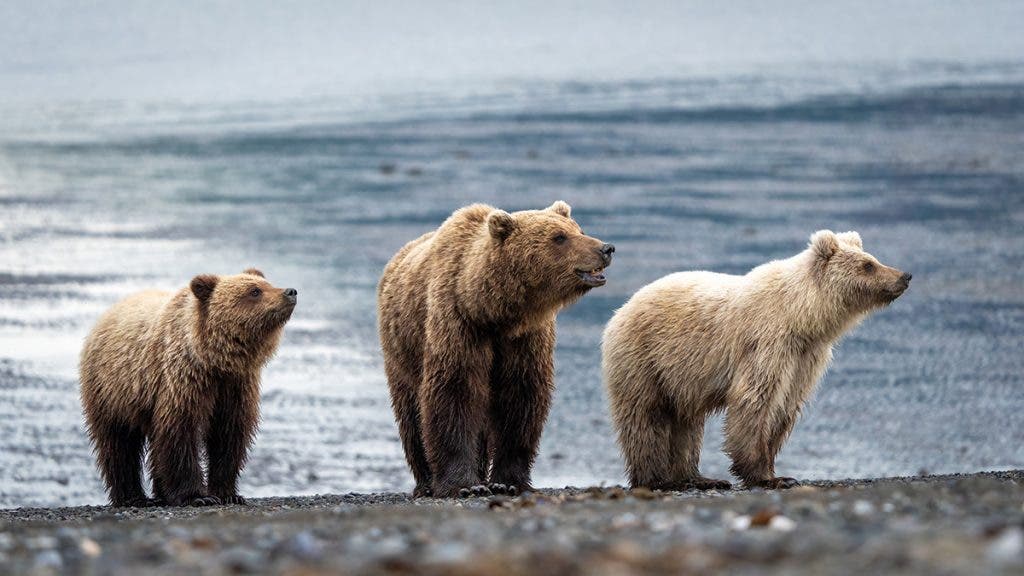
Protecting Alaska’s threatened brown bears
“Making it” solely as a wildlife photographer can be tough, but Morgan and Hillman have found that building a career that blends guiding and photography can be fruitful and fulfilling. “In today’s modern age, it’s so much harder to become a professional photographer in the general sense; a lot of photographers I’ve met and talked with, we all have different ways that we get revenue through photography,” Hillman says. “For Jessica [Morgan] and me, it’s a lot of guiding and teaching photography to guests.”
The pair use their photographic backgrounds to help guests nail their shots, whether it’s navigating camera settings, considering composition, or using the scopes for a smartphone close-up. They also capitalize on these opportunities to help guests safeguard the bears.
The power of social media
“We encourage our guests and guides to use the photos they get in these places to get the word out through social media, to their friends, local camera clubs,” says Hillman, noting that talking about these issues and using photos to illustrate the importance can be powerful.
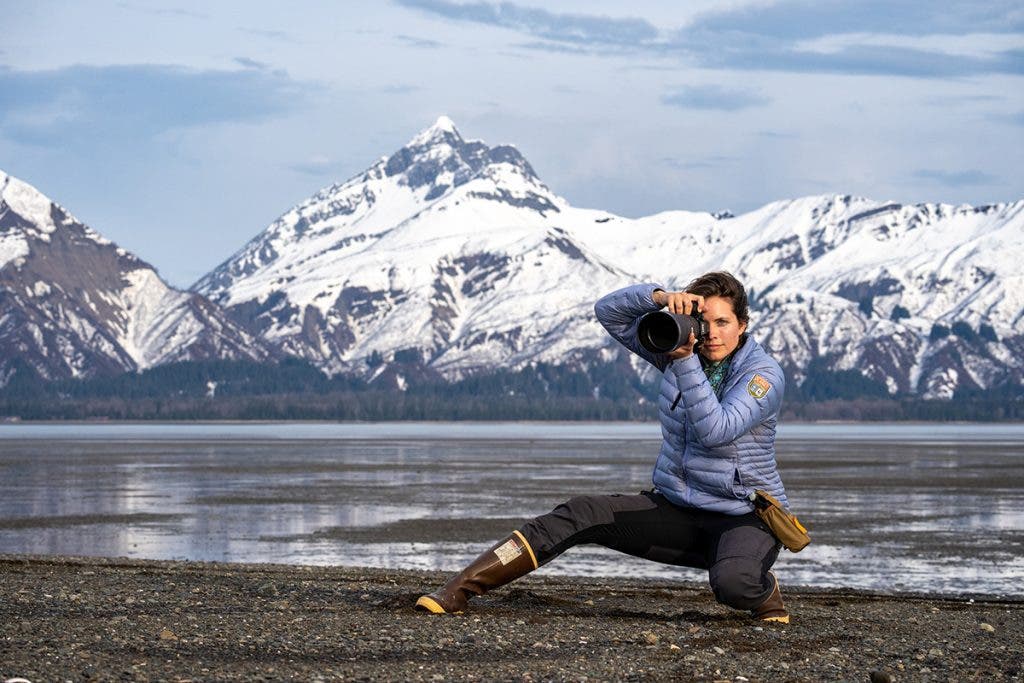
This influence is particularly important as the bears of south-central Alaska face threat after threat from potential mining projects—including a new proposal for a mine within Lake Clark National Park, which would greatly disrupt the ecosystem these bears rely on. Guiding and bringing sustainable tourism to these regions can illustrate the value of protecting the region’s flora and fauna. “This is huge because it shows how Alaska has a sustainable way to make money in these landscapes that aren’t so extractive like mining,” Hillman says.
Another way they suggest using photography for good is by sharing pro-bono imagery with nonprofits. “I’ll reach out to conservation organizations and say, ‘Hey, I’m a photographer with his collection of photos—can I donate them to your organization for blog posts, newsletters, and fundraising campaigns?’’’ Hillman says.
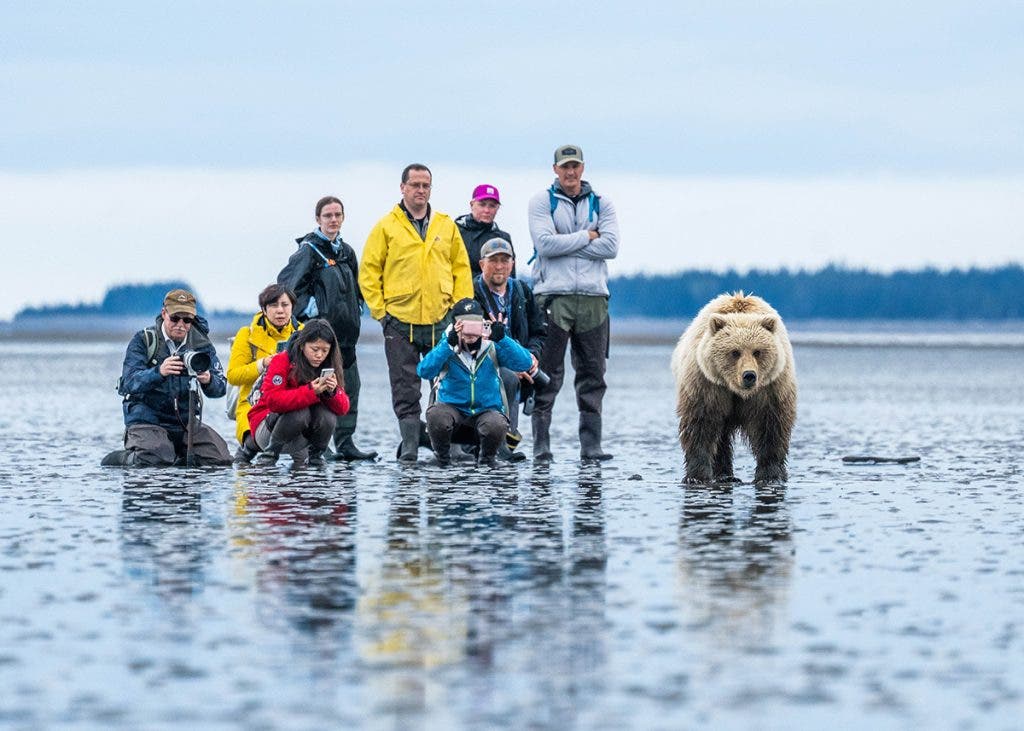
Expert bear photography tips
Hillman and Morgan have careers that include not only photographing Alaska’s brown bears but also helping guests do the same. We asked for their advice on capturing stand-out bear images; here’s what they had to say.
First, learn your camera before stepping foot in bear country. “These moments are fleeting, and if you’re getting frustrated with your equipment because you didn’t learn it, that can ruin your time,” Morgan says. Practicing can be as simple as photographing your dog or backyard critters. She also recommends understanding not only your camera but also your tripod before hitting the field. “I’ve seen so many times where it just gets in the way, or [guests are] being loud with it or bumping into people.”
Next, Hillman suggests thinking beyond the zoomed-in wildlife shot. “I see a lot of folks that have their camera zoomed into its furthest degree. That cuts off the paw or a bit of the rump—and you can fix that by taking a breather and realizing you don’t always have to be all the way zoomed,” he says. “Widening the field of view can help you fully frame the bear and maybe fit in some of the landscape behind it. And, zooming in too far, depending on your camera, can mean you lose quality.”
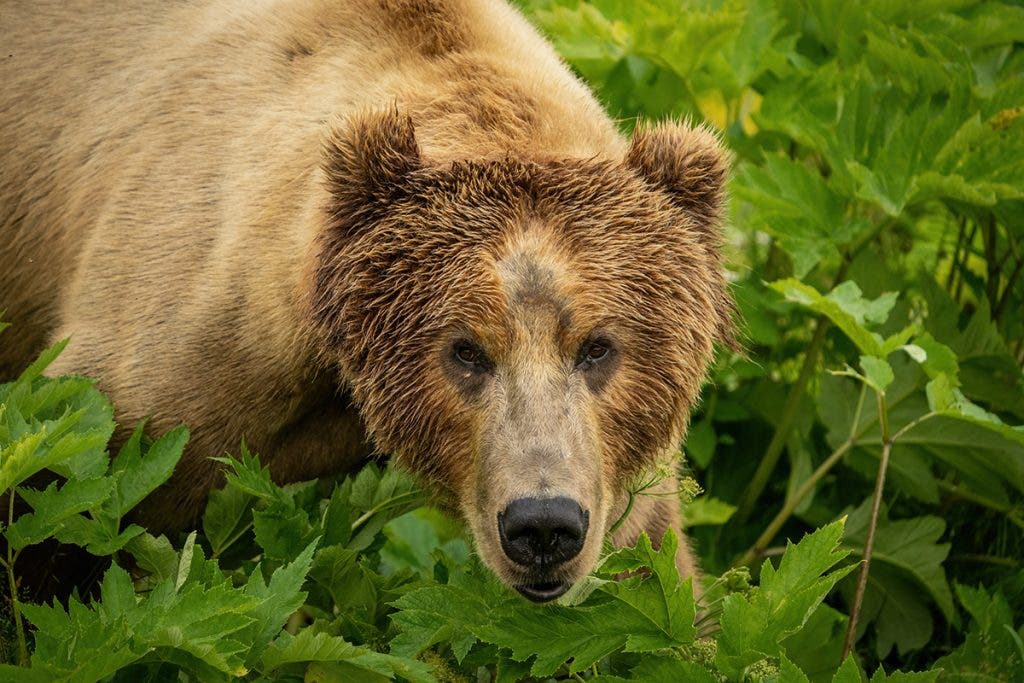
Hillman also recommends looking for a wildlife camera with animal eye autofocus—a feature that works particularly well on brown bears. “They have that dark spot for their eye, and they also have this dark spot on the inner part of their eye, and autofocus sometimes picks that up.”
Gear used to capture the wild
Speaking of gear, Hillman and Morgan, like any good photography couple, use the same system—Sony A1 cameras—so they can share their robust kit of lenses, which include a handful of wide-angles as well as Morgan’s go-to, the Sony 100-400mm lens, and Hillman’s tried-and-true Sony 200-600mm lens.
Risks of bear photography
Now, given brown bears are wild animals, it’s important to prioritize bear safety over bear photography—particularly if you’re traveling without expert guides. For starters, always touch base with the nearest backcountry station or visitor center before heading into the wilderness. It’s better to travel in groups instead of solo and always carry deterrent like bear spray (and learn how to use it), says Morgan. “Be vocal and watch their behavior,” she continues. “And always bring your long lens. You don’t need to be getting close to get wide-angle shots of a bear.”
Craving more bear-photography inspiration? Head just south of Morgan and Hillman’s Lake Clark National Park summer hangout to explore brown bears in Katmai National Park with photographer Melissa Findley.
